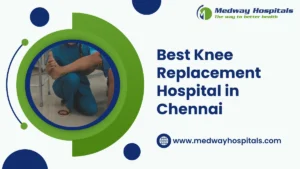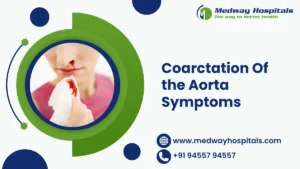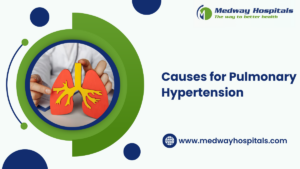Breast cancer clinical trials provide a unique chance for patients to access cutting-edge treatments that could potentially improve their chances of survival and quality of life. At Medway, we understand the critical role these trials play, especially for patients seeking alternative treatment options when traditional methods fail. These trials offer hope for patients battling breast cancer, with innovative therapies that may significantly alter the course of their treatment. By participating, patients help accelerate medical research, bringing us closer to discovering new methods of care and potential breakthroughs.

What Are Clinical Trials?
Breast cancer clinical trials serve as structured research studies aimed at discovering more effective ways to treat diseases like breast cancer. These trials are instrumental in the development of new treatments and testing existing therapies in different ways to improve patient outcomes. Participants in these trials not only gain access to new therapies but also help researchers understand cancer in more detail, ultimately contributing to better treatment options in the future.
- Test New Treatments: The primary goal of clinical trials is to evaluate new therapies and medications for effectiveness.
- Ensure Safety: Every aspect of the trial is designed to monitor patient health closely, ensuring that new treatments do not pose unnecessary risks.
- Improve Effectiveness: Trials gather data on how well a treatment works, including side effects and success rates.
Participation in clinical trials offers an opportunity to be at the forefront of medical innovation, helping to pave the way for more effective therapies for future patients.
The Importance of Clinical Trials
Clinical trials are the cornerstone of progress in the fight against breast cancer. They provide a vital mechanism for testing new drugs, therapies, and treatment approaches in a controlled, monitored environment. By offering participants the chance to receive novel treatments, these trials provide hope for improved survival rates and better quality of life, especially for patients with few other options. Breast cancer clinical trials serve as the testing ground for breakthrough therapies, directly influencing the future of cancer care.
- Access to Innovative Treatments: Clinical trials provide patients with access to therapies that are not available through conventional care.
- Enhanced Medical Monitoring: The close monitoring that trial participants undergo often leads to more personalized and frequent care.
- Contribution to Medical Advancements: Every trial participant helps drive the research that may one day lead to new standards of care.
By taking part in clinical trials, patients play an integral role in the development of next-generation breast cancer treatments, potentially improving outcomes for countless others.
Benefits of Taking Part in a Clinical Trial
The potential rewards of participating in breast cancer clinical trials are immense, not just for individual patients but for the broader medical community. These trials provide more than just access to new treatments—they offer patients personalized care, more frequent check-ups, and the chance to contribute to the future of cancer research.
- Early Access to New Treatments: Clinical trials offer patients the chance to access promising new therapies before they are available to the public.
- Personalized Care and Monitoring: Patients in clinical trials often experience closer attention from medical professionals, with frequent health assessments and tailored treatment plans.
- Making a Difference for Future Patients: By participating, patients contribute directly to advancing cancer research, which may ultimately benefit future generations of cancer patients.
For those struggling with advanced-stage breast cancer, including stage 4, these trials provide an opportunity for access to groundbreaking therapies that may offer new hope when conventional treatments have been exhausted.
Drawbacks of Taking Part in a Clinical Trial
While breast cancer clinical trials provide significant benefits, they also come with certain drawbacks that patients need to consider. The experimental nature of these therapies means there is no guarantee of success, and the potential for side effects exists. Additionally, the demands on a patient’s time and finances should be evaluated before committing to a trial.
- Uncertain Outcomes: There is always a degree of uncertainty, as new treatments may not prove to be more effective than existing therapies.
- Potential Side Effects: As these therapies are still being tested, they could cause side effects that are not fully understood or predictable.
- Time Commitment: Clinical trials often require frequent hospital visits, additional tests, and follow-up appointments, which can be time-consuming.
- Financial Considerations: While certain costs may be covered, patients might have to pay for travel, lodging, or treatments not covered by the trial.
- Limited Availability: Access to clinical trials can be restricted based on eligibility criteria, and not all patients may qualify for every trial.
Weighing these challenges carefully is essential for patients when deciding whether to participate in a clinical trial, ensuring they fully understand the potential impact on their lives.
Phases of Cancer Treatment Trials
Understanding the different phases of clinical trials is important for patients, as each phase plays a unique role in evaluating new treatments for breast cancer. The progression from one phase to another ensures that any new therapy is thoroughly tested for both safety and efficacy before becoming a mainstream option.
- Phase 1: The primary focus is on the safety of the new treatment, including identifying the correct dosage. It involves a smaller group of patients.
- Phase 2: This phase evaluates how well the treatment works against breast cancer, while continuing to monitor its safety profile.
- Phase 3: Involves comparing the new treatment to existing therapies in a larger group of patients to determine its effectiveness and potential for broader use.
- Phase 4: This phase occurs after the treatment has been approved, focusing on long-term safety and any unforeseen side effects or risks.
Participating in any phase of a clinical trial helps gather valuable data that can advance the science of breast cancer treatment, potentially offering patients more targeted and effective options.
Current Breast Cancer Clinical Trials
Medway is actively involved in a range of current breast cancer clinical trials, offering patients access to the latest therapies and innovations. These trials are pivotal in providing patients with new treatment options that may offer better outcomes than standard care.
- Immunotherapy Trials: These trials focus on harnessing the body’s immune system to more effectively fight cancer, offering an alternative to traditional treatments.
- Targeted Therapy Trials: These trials investigate therapies that target specific cancer cell mechanisms, aiming to reduce side effects and improve treatment efficiency.
- Clinical trials for breast cancer stage 4: For patients with advanced breast cancer, these trials offer new, promising treatment options designed to improve quality of life and extend survival. Clinical trials for breast cancer stage 4 play a critical role in offering advanced treatments that are tailored to meet the unique needs of stage 4 patients.
By joining these trials, patients not only have the chance to explore new therapies but also contribute to the evolution of breast cancer treatment.
Conclusion
Breast cancer clinical trials offer invaluable opportunities for patients to explore new and potentially more effective treatment options. At Medway, we are dedicated to supporting patients by providing access to the latest trials and innovative therapies. Clinical trials are a vital part of the effort to discover better treatments and improve survival rates for breast cancer patients. If you or a loved one is facing breast cancer, consider exploring clinical trial opportunities at Medway, where advanced treatments and personalized care await.








